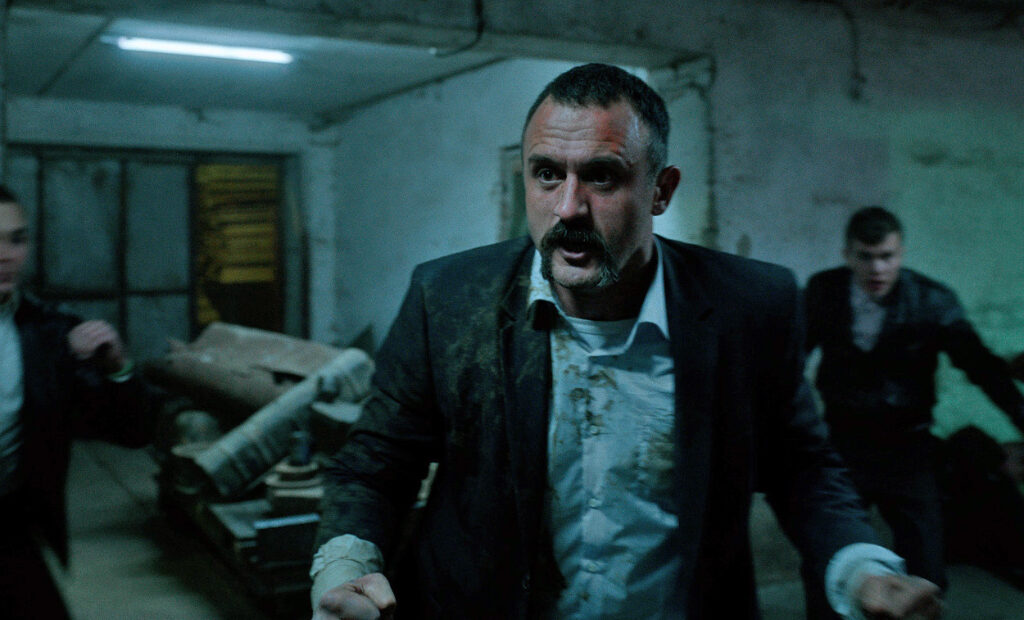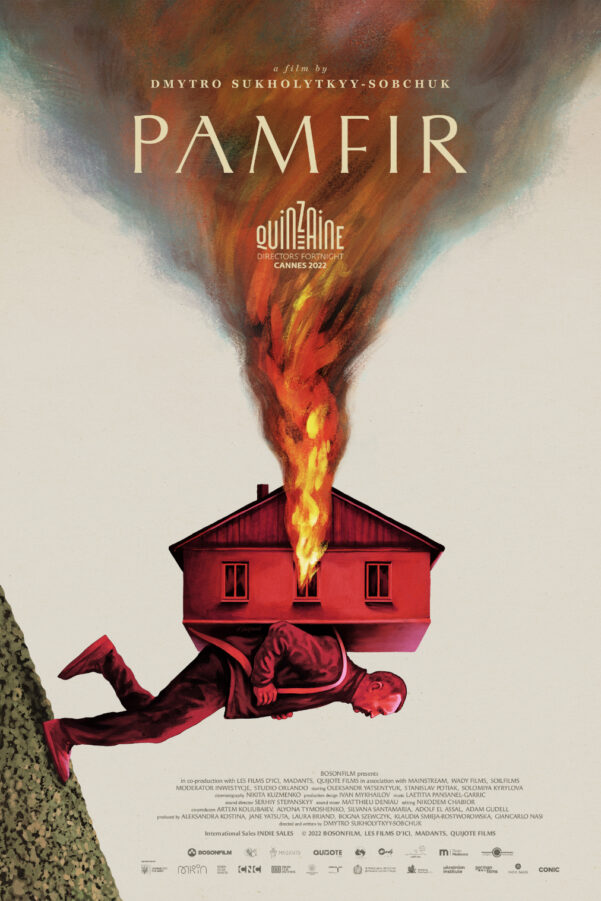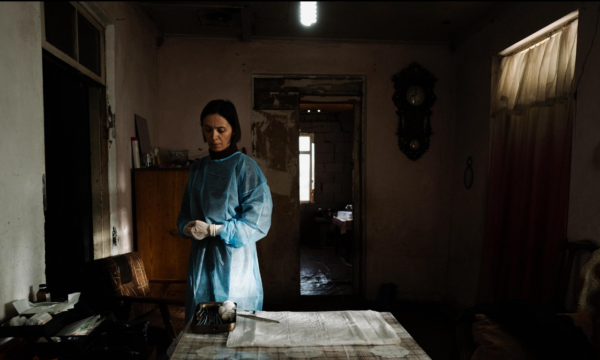Pamfir

The synopsis for Pamfir – the story of its titular protagonist returning home to his family in the small, western border region of Chernivtsi, Ukraine, only to be pulled back between the teeth of the town’s domineering corruption – adorned with the rich narrative trappings of its genre, promotes certain expectations. Through an Anglo-American lens, we may expect the moody, breakneck pacing of something akin to the Safdie brothers, or the kinetic, caper quality of the likes of Guy Ritchie or Quentin Tarantino. Dmytro Sukholytkyy-Sobchuk’s debut, however, is really neither, but a playfully assembled amalgamation of offbeat tonality and imagery: a morbid celebration of Ukraine’s past and an apprehensive tilt towards its future.
The hometown of Pamfir (Oleksandr Yatsentyuk) is one, not just riddled with corruption, but outright governed by it. Many of its residents make their living, or at least supplement it, through the illegal smuggling of goods into neighbouring Romania. Pamfir, for most of his adult life, has been no exception. However, upon returning to Ukraine from an extended period working abroad in Poland, he promises his wife, Olena (Solomiya Kyrylova) that his income will be, from now on, legitimate. In return for securing his documentation to return to Poland, Pamfir digs a well for the perversely mob-owned town church. That is, until his son, Nazar (Stanislav Potyak), in an effort to keep his father home, starts a fire with the intention of burning his documentation, ultimately engulfing the entire church. In order to pay back the damages and curry favour with the mob, Pamfir must return to smuggling.
Pamfir himself is something of a legendary figure: an almost mythical, formidable force known as one of the region’s most reliable smugglers, and while the film’s style broadly aligns with narrative realism, it is inflected somewhat with the mythicism of his reputation. The events of the film simmer towards a climax set against the backdrop of a traditional festival known as “Malanka”, Sukholytkyy-Sobchuk utilising its heady aestheticism to bring to mind the hypnoticism of folk horror. Meanwhile, the story unfurls in gracefully shot and edited long takes, thickened by Nikita Kuzmenko’s rich, impressionistic cinematography, imbuing the film with an elegant rhythm that feels intentionally, and intriguingly, discordant against an often playfully spiky screenplay.
As a result of the brutal invasion of Ukraine, which began after the development of this project, Pamfir will be perhaps inevitably interpreted through a lens of quiet defiance, a feature which showcases Ukraine as a truly independent, autonomous culture, warts and all. But it is equally dealing in the internal conflict between good and evil, which is as old as the genre itself. It does so, however, in a way that feels supremely unique, and yes, quintessentially Ukrainian.
Matthew McMillan
Pamfir is released in select cinemas on 5th May 2023.
Watch the trailer for Pamfir here:

























Facebook
Twitter
Instagram
YouTube
RSS